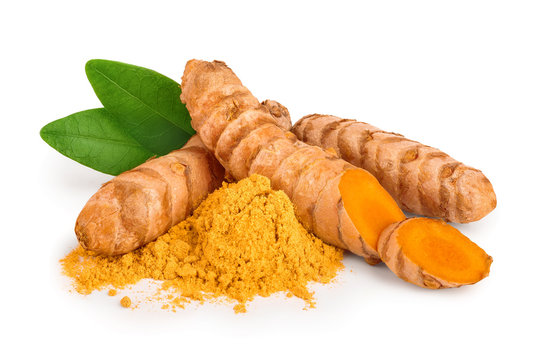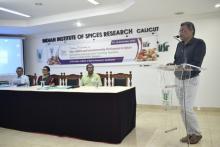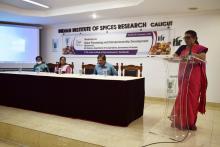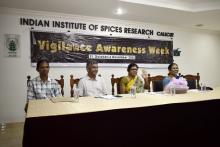|
|
Around 1404 accessions are being maintained in the field gene bank and the germplasm conservatory was enriched with three new Curcuma longa and five Curcuma sp. from Andaman Islands.
|
 |
|
|
155 accessions, eight varieties and four GIs (Erode turmeric, Sangli turmeric, Waigon turmeric and Kandhmalhaldi) were characterized for different quality parameters and their curcumin content varied from 0.6 to 5.2%.
|
|
|
|
Twenty TFs belonging to the classes bHLH, WD 40, NAC, WRKY and bZIP that showed differential expression with respect to curcumin were identified through comparative transcriptome analysis.
|
|
|
|
Evaluation of different management systems indicated that organic system (100%) recorded maximum yield (34.78 tjha) followed by integrated system (50%+50%)(31.8 tjha). Among the twelve varieties, Suguna recorded highest yield (40.8 tjha) followed by Pragati (38.6 tjha).
|
|
|
|
A novel spice mix formulation with turmeric, ginger and cinnamon was developed for turmeric milk preparation; one as ready to serve flavoured turmeric milk and the other one as turmeric milk instant mix powder. The technologies were commercialized to MILMA.
|
|
|
|
Spraying of low risk insecticides viz., chlorantraniliprole, flubendiamide and spinosad at fortnightly intervals rather than spraying at monthly intervals is more effective in controlling the shoot borer.
|
|
|
|
An entomopathogenic fungus was isolated from Conogethes punctiferalis and identified as Metarhizium pingshaense based on morphological characteristics and molecular studies.
|
|
|
|
Effect of cold storage of rhizomes on lesion nematodes indicated that nematode infested rhizomes stored in a cold storage (4-8DC) for 35 days resulted in 100% mortality of nematodes compared to room temperature. |














